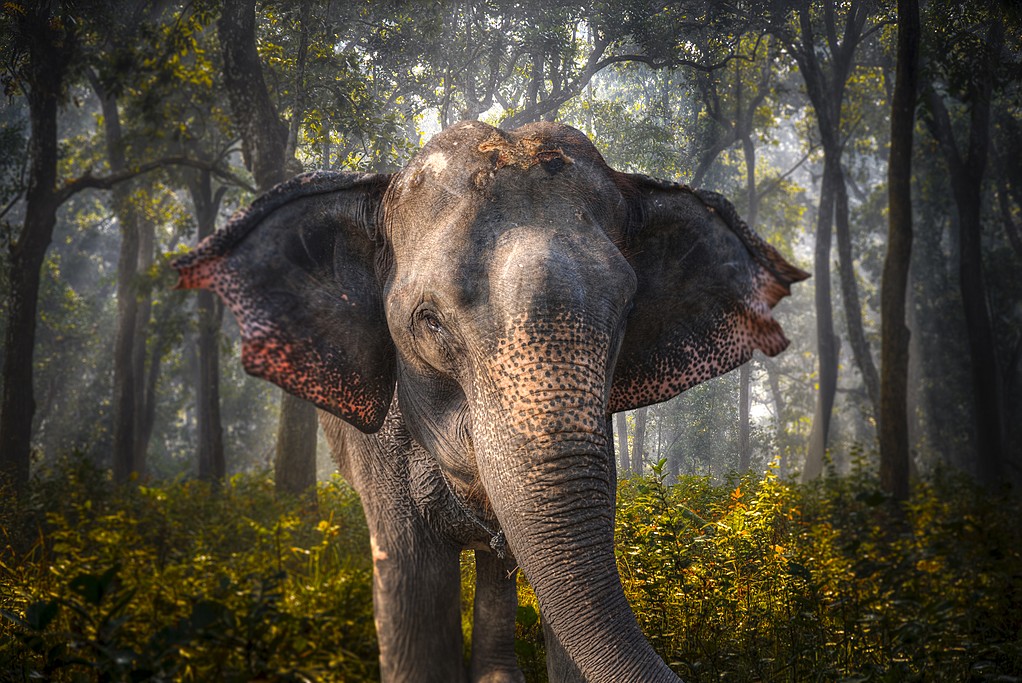Deciding Which Park to Visit
Nepal has ten national parks, two of which are of particular interest to travelers eager to see jungle and wildlife—Chitwan and Bardia. Chitwan is more popular because it is closer to Kathmandu (and hence more easily accessible). Bardia is very remote, but if you want to escape the crowds, this is the place to go.
For both parks, the best time to visit is from March to April, Nepal’s dry season. At this time, the jungle foliage is less thick, making it easier to spot animals. Also, because fewer water sources are available to wildlife during this period, guides have an easier time assessing where the animals will be drinking and bathing.
The next best time to visit the jungle is from October to November. After the summer monsoon season, the jungle is incredibly green—making it harder to spot animals—but the weather is pleasant (with temperatures hovering around 70° F in the afternoon). For more information, check out our article on the best time to visit Nepal.
Chat with a local specialist who can help organize your trip.
Chitwan National Park

Chitwan was the first national park in Nepal. Established in 1973, it's a five-hour drive or 25-minute flight from Kathmandu, and it consists of 360 square miles of sal forest, grassland, and marshes. The park is located in the subtropical Inner Terai lowlands. To visit, you must to be accompanied by a guide.
Most safari trips start early in the morning: animals are most active around dawn and the heat is less overwhelming. Options for exploring include safari hikes, canoeing, or a jeep safari in the park.
Sample itineraries that include Chitwan:
Wildlife in Chitwan National Park

In Chitwan, there’s a high chance of spotting the Asian one-horned rhino which is a special opportunity given poaching in the early 20th century saw the rhino on the verge of extinction in Nepal's jungle. In 1962, Chitwan was set up as a rhino sanctuary, going on to become the country’s first national park a decade later. Today, there are over 500 rhinos in the park.
Chitwan also has one of the highest populations of Bengal tigers in the world, with around 122 known to roam the area. They can be hard to spot in a thick jungle with lots of water sources for the animals. This is where a knowledgeable local guide becomes important.
Other animals to watch out for include Indian bison, langur, four kinds of deer, the gharial crocodile (also known as the fish-eating crocodile), and 150 varieties of butterfly. If you’re very lucky, you might see a leopard, sloth bear, or wild elephant. There are also over 500 species of bird, including herons, kingfishers, flycatchers, woodpeckers, red jungle fowl, and egrets. The best time to see the birds at Chitwan is in March or December: serious birdwatchers may want to plan their visit around this time frame.
Accessing Chitwan National Park
Chitwan is a 5-6 hour journey by road from Kathmandu. You can also fly from Kathmandu into Bharatpur Airport, which is just outside the park. There are about seven flights from Kathmandu every day and the journey takes 25 minutes.
Chitwan has two main entrances: Sauraha is in the east and Meghauli Village in the west.
Bardia National Park

On the border with northern India in the mid-Far Western Terai, Bardia National Park is truly remote. If you want to escape the crowds and feel like you have Nepal’s wilderness all to yourself, this is the place for you. Not nearly as commercial as Chitwan, the park covers 373 square miles of dense sal forest and grassland cut through by the jade-colored Karnali River. You could spend hours here without meeting another soul.
The park is known for its variety of habitats, from dry upland slopes to pockets of grassy plains. This means you'll see an abundance of wildlife. If you can, allow yourself at least three or four days here, and be sure to start your days early, when animals are most active and temperatures are relatively comfortable.
Wildlife in Bardia National Park

Get ready for tigers. In 2010, Banke National Park was established on the eastern border of Bardia. Together, the parks form the largest tiger conservation area in Asia. The vegetation isn’t as dense as it is in Chitwan, plus there aren’t quite as many water sources, so there's more of a chance to see them in Bardia.
Also, keep an eye out for rhinos. They seem to prefer the western side of the park, so you might want to head there with your group. Asian elephants, spotted deer, hog deer, nilgai antelopes, wild boar, leopards, jackals, and freshwater Gangetic dolphins all live in the park, too. Bardia is also a habitat for a range of endangered birds, including the Bengal florican, sliver-eared mesia, sarus crane, and lesser florican.
Sample itineraries that include Bardia:
Accessing Bardia National Park
From Kathmandu, you can fly to Nepalganj Airport, which is a three-hour bus ride (or 4x4 ride) away from the park. Flights run about five times daily and the overland journey takes about an hour. The park's headquarters is at Thakudwara (also spelled Thakurdwara), which is also where you can find accommodations. There's a smaller headquarters at the eastern entrance at East Chisapani.
